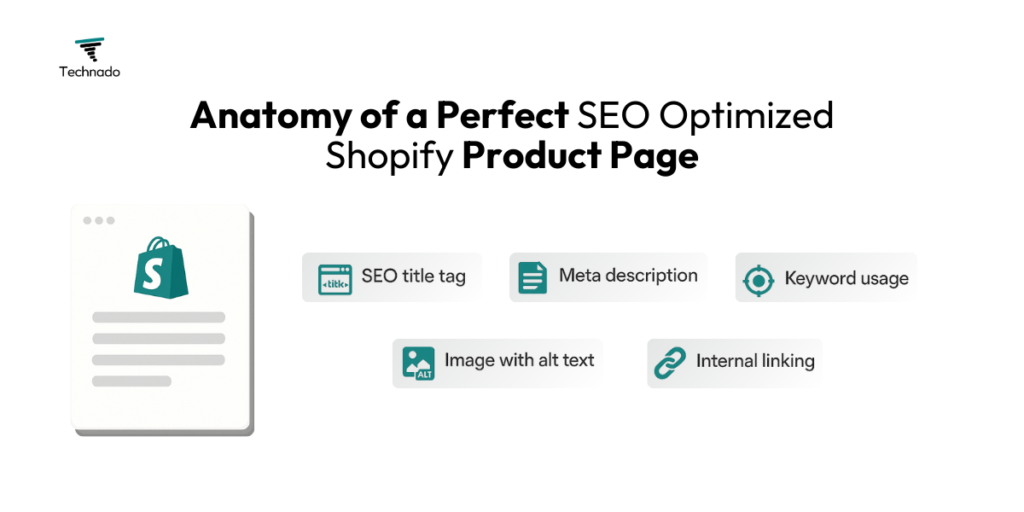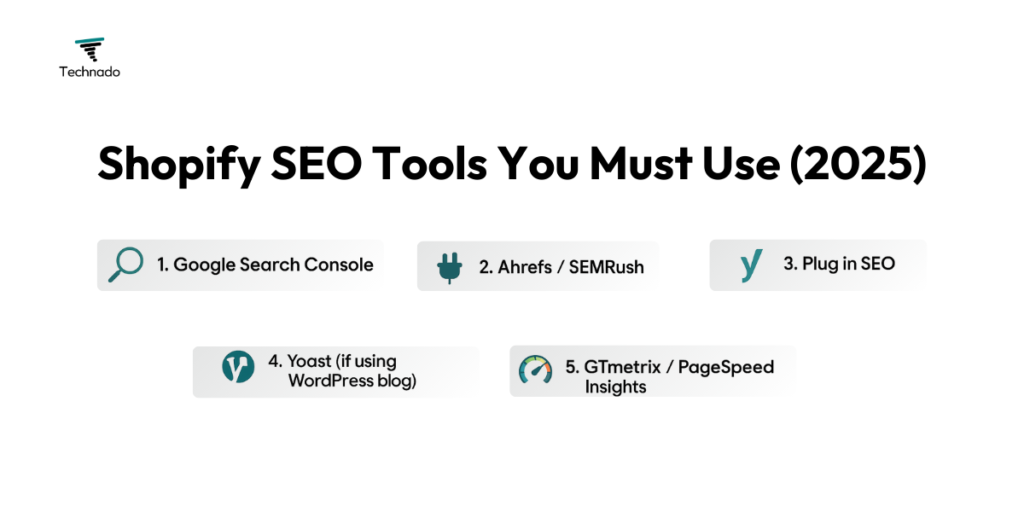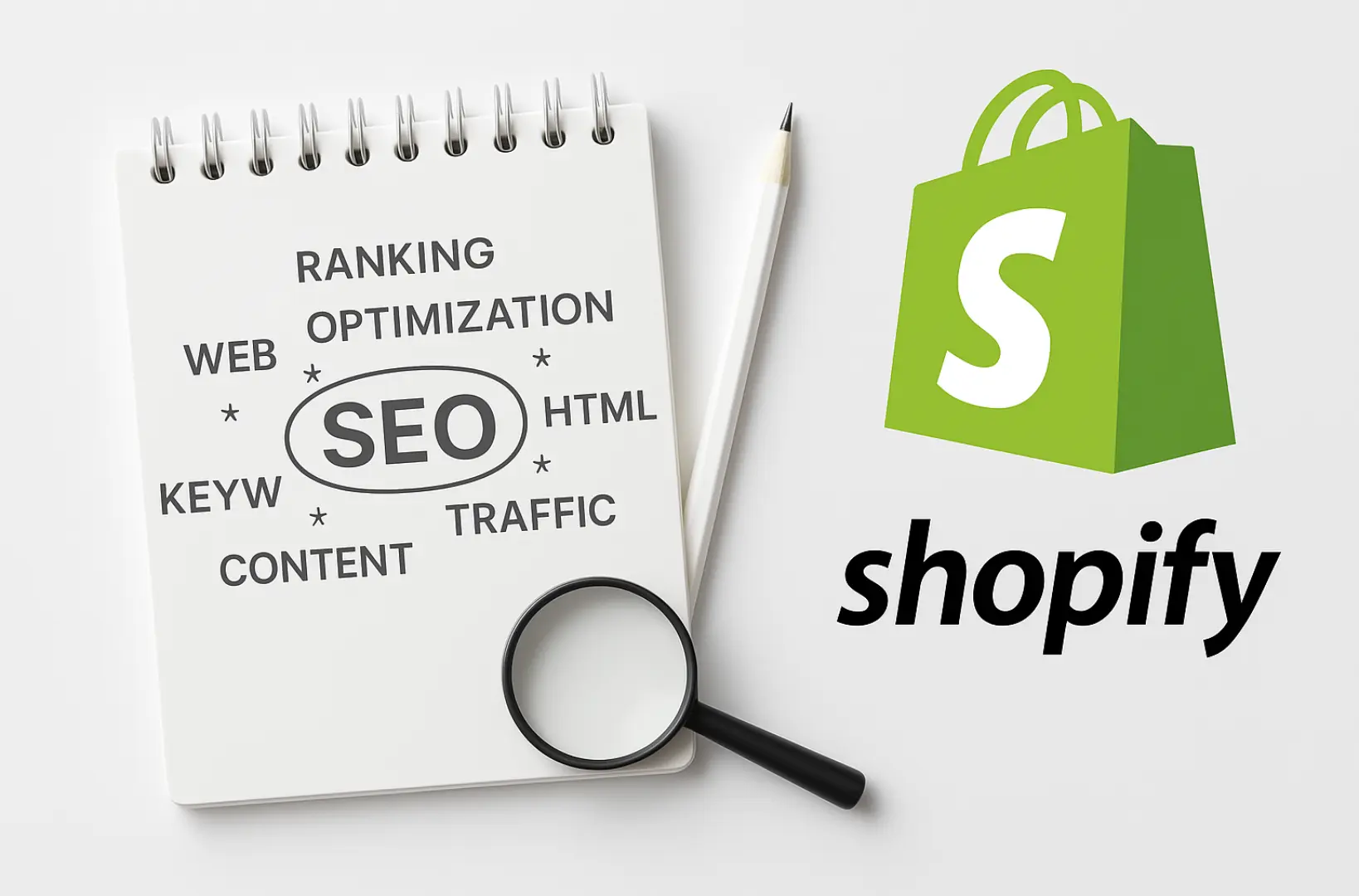Unlock organic growth and maximize your store’s visibility in 2025.
In 2025, e-commerce continues to grow at a blistering pace, and with more competition than ever, simply having a Shopify store is no longer enough. You need a digital storefront that’s not only visually appealing but also search engine optimized to attract organic traffic. SEO has evolved beyond keyword stuffing and title tweaks—today, it’s about delivering relevance, speed, usability, and trust.
Whether you’re just starting out or scaling your online business, Shopify SEO is your secret weapon for long-term success. With Google’s algorithms constantly changing, thanks to AI advancements like SGE (Search Generative Experience) and a focus on EEAT (Experience, Expertise, Authority, Trustworthiness), brands that optimize for users and bots will lead the pack.
This comprehensive guide walks you through the latest strategies, tools, and techniques to improve your Shopify SEO in 2025. No fluff—just real, actionable insights to help your store grow organically and sustainably.
What Is Shopify SEO?
Shopify SEO is the process of optimizing your Shopify store to rank higher in search engine results and attract more organic traffic. It combines several tactics, including technical SEO, content optimization, keyword targeting, site architecture, and user experience enhancements. The goal is simple: make your store more discoverable to both users and search engines.
Shopify does offer some built-in SEO features—like automatic sitemaps, clean URLs, and canonical tags—but these are just the basics. To stand out in 2025’s competitive online landscape, you need to go deeper. That means writing unique product descriptions, optimizing images and metadata, improving mobile performance, and building external backlinks.
Think of Shopify SEO as creating a digital roadmap that signals to Google, “My store is credible, relevant, and deserves to be shown to your users.” When executed correctly, Shopify SEO becomes one of the most powerful tools to grow your business sustainably, without constantly relying on paid ads.

Why Shopify SEO Matters More Than Ever in 2025
Let’s break down the current landscape:
- Organic search drives over 53% of all website traffic, far surpassing paid ads and social media combined.
- As advertising costs soar, especially with the rise of AI-enhanced bidding on platforms like Google Ads and Meta, organic traffic remains the most cost-effective long-term growth strategy.
- Google’s latest updates—like the Search Generative Experience (SGE) and increased focus on EEAT (Experience, Expertise, Authority, Trustworthiness)—prioritize sites with rich content and seamless UX.
So if you’re serious about building a sustainable e-commerce brand, Shopify SEO isn’t optional—it’s essential.
Step-by-Step Shopify SEO Guide (2025)
Step 1: Start with an SEO-Friendly Theme
Choosing the right theme sets the tone for all your SEO efforts. An SEO-optimized theme should:
- Load fast (under 2.5 seconds ideally)
- Be fully responsive across all devices
- Include semantic HTML5 code
- Support accessibility standards (WCAG)
- Allow easy navigation and internal linking
Recommended Shopify Themes:
- Dawn (free, lightweight, mobile-first)
- Booster Theme (premium, built-in SEO options)
- Out of the Sandbox – Turbo (high-speed, customizable, great for scaling)
Pro Tip: Use Google PageSpeed Insights and GTmetrix to test the demo theme’s performance before installation.
Step 2: Keyword Research: Go Beyond Basics
Keyword research is the backbone of every high-ranking page.
Tools to Use:
- Ahrefs or SEMrush – for keyword difficulty, volume, and competitor insights
- Google Keyword Planner – for PPC & organic ideas
- AnswerThePublic or AlsoAsked – for long-tail and question-based queries
- ChatGPT / Gemini – for search-intent clustering & content ideation
Focus Areas for 2025:
- Long-tail keywords: “best vegan leather backpacks for college students”
- Transactional terms: “buy”, “shop”, “discount”, “fast shipping”
- Voice search phrases: “Where can I buy affordable home decor online?”
Pro Tip: Use keyword modifiers like “eco-friendly”, “2025”, “handmade”, or “next-day delivery” to match evolving buyer behavior.

Step 3: Structure Your Site for Crawlability & UX
A well-organized site structure is not only easier for customers to navigate, but it also helps search engines crawl and index your site effectively.
Best Practices:
- Use a flat architecture: No page should be more than 3 clicks from the homepage.
- Group your content logically into:
- Homepage
- Main collections
- Subcollections
- Individual product pages
- Blog section
Sample Shopify Store Structure:
Home
└── Men’s Fashion
└── T-Shirts
└── Product: Slim Fit Organic Tee
└── Blog
└── “How to Style Organic Tees in 2025”
Add internal links between related products and blog content to boost page authority and time-on-site.
Step 4: On-Page SEO Optimization
Mastering on-page SEO ensures each page is discoverable and engaging.
Optimize:
- Title Tags: Include your target keyword, keep it under 60 characters.
- Example: “Slim Fit Organic Tee | Free Shipping | EcoWear”
- Example: “Slim Fit Organic Tee | Free Shipping | EcoWear”
- Meta Descriptions: Write compelling copy with the keyword and CTA (155 characters max).
- Headings: Use H1 for the main title, then H2, H3, etc., for sub-sections. Don’t keyword-stuff—prioritize natural readability.
- Image Optimization:
- Rename images: organic-tee-mens-blue.jpg
- Add descriptive alt text for each image
- Compress images using TinyPNG, ImageOptim, or Shopify’s built-in tools
Pro Tip: Add FAQs using rich snippets for better chances of ranking in Google’s Featured Snippets.
Step 5: Page Speed & Core Web Vitals
Slow stores kill conversions and rankings.
Improve Speed by:
- Compressing all media files
- Avoiding bulky apps (remove what you don’t use)
- Implementing lazy loading for images and videos
- Using Shopify’s native theme inspector and Lighthouse Reports
Core Metrics to Track:
- Largest Contentful Paint (LCP): < 2.5s
- First Input Delay (FID): < 100ms
- Cumulative Layout Shift (CLS): < 0.1
Tools to test: WebPageTest, Lighthouse, PageSpeed Insights
Step 6: Mobile Optimization for 2025 and Beyond
With mobile shopping leading the charge in 2025, your store must feel as smooth as an app.
Key Mobile SEO Tips:
- Use large tap targets for buttons
- Minimize pop-ups and interstitials
- Test checkout flow on all screen sizes
- Prioritize thumb-friendly navigation
- Leverage Shopify’s mobile optimization tools like Shop Pay and Shopify Markets
Test regularly using Google’s Mobile-Friendly Test and real devices.
Step 7: Create High-Quality, SEO-Driven Content
Content isn’t just for blogs—it’s your ticket to building authority.
Ideas for Shopify Blog Posts:
- How-To Guides: “How to Choose the Right Running Shoes for Flat Feet”
- Listicles: “Top 10 Gifts for Tech Lovers in 2025”
- Product Spotlights: “Behind the Scenes: How Our Leather Bags Are Made”
Add FAQs, infographics, and videos to enrich each post.
In 2025, Google’s AI favors long-form, well-structured content with semantic richness, so aim for 1,200–2,000 words per blog post.
Step 8: Product Page SEO That Converts
Each product page should serve both humans and search engines.
Optimize:
- Unique Product Descriptions (Avoid supplier-supplied copy!)
- Reviews and UGC: Boosts trust and keyword density naturally
- Schema Markup: Show price, reviews, availability in Google
Use Shopify apps like:
- Loox or Yotpo (for UGC/reviews)
- Smart SEO or JSON-LD for SEO (for structured data)
Step 9: Build High-Quality Backlinks
Backlinks are still one of Google’s top-ranking signals.
Ways to Get Links:
- Partner with micro-influencers or bloggers in your niche
- Submit guest posts on industry-related blogs
- List products on curated list websites
- Share press releases for product launches
Pro Tip: Use HARO (Help A Reporter Out) to get featured in publications for free.
Step 10: Use Shopify SEO Apps Wisely
Shopify offers a ton of SEO apps—but don’t overdo it.
Must-Have SEO Apps (2025):
- Yoast SEO for Shopify – Content and metadata optimization
- Plug in SEO – Scans and fixes technical issues
- Booster SEO – AI-powered optimization tools
- JSON-LD for SEO – Adds schema markup to boost rich snippets
Only install apps that serve a specific purpose, and monitor their impact on page speed.
Step 11: Track, Analyze & Iterate
SEO is never a one-time task. It’s ongoing.
Use These Tools:
- Google Search Console: Crawl errors, search queries, CTR, indexing
- GA4: Understand which pages convert and where traffic drops off
- Shopify Analytics: Product performance and sales funnel
- Ahrefs/Semrush: Rank tracking, backlink analysis, and audits
Update older content every 3–6 months to maintain rankings.
Future Trends to Watch in Shopify SEO (2025+)
- AI-powered shopping: Optimize for natural language and generative search
- Zero-click results: Target rich snippets, People Also Ask, and AI Overviews
- Hyper-personalization: Create segmented content for different audience types
- Voice search: Incorporate conversational queries in FAQs and product copy
- Visual search optimization: Use high-quality, descriptive images and alt text
Final Thoughts
Shopify SEO in 2025 goes far beyond just inserting keywords or optimizing page titles. It’s about crafting a fast, immersive, and valuable experience for your audience, while simultaneously giving search engines the technical signals and content structure they need to trust and rank your site. In a world where Google’s algorithm is smarter and more user-focused than ever, your store’s success depends on how well you align with evolving SEO standards.
Whether you’re a solo entrepreneur, a dropshipper, or a scaling e-commerce brand, applying SEO best practices isn’t optional—it’s a growth necessity. From theme selection and keyword research to structured data and mobile performance, every element of your store matters.
This guide gives you the tools, strategies, and up-to-date insights needed to unlock long-term, organic visibility. So, if you’re serious about scaling sustainably, without being dependent on ads, there’s no better time to act. Start optimizing today. Google’s algorithm won’t wait.
Suggested Reads
DigitalOcean Expands to Pakistan – New HQ at COLABS
Manus Isn’t China’s Second ‘DeepSeek Moment’—Here’s Why
Google Pay Launches in Pakistan: A Game Changer for Digital Payments

Burhan Ahmad is a Senior Content Editor at Technado, with a strong focus on tech, software development, cybersecurity, and digital marketing. He has previously contributed to leading digital platforms, delivering insightful content in these areas.




One Response
I do trust all the ideas youve presented in your post They are really convincing and will definitely work Nonetheless the posts are too short for newbies May just you please lengthen them a bit from next time Thank you for the post